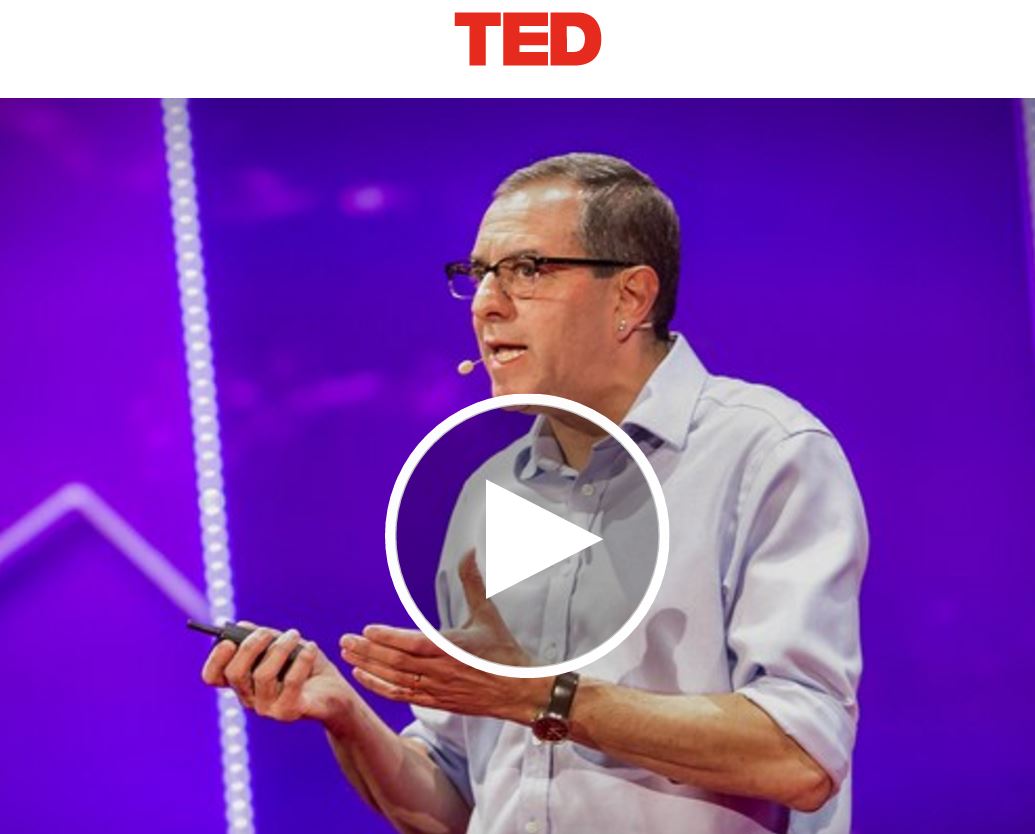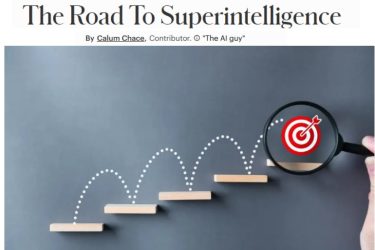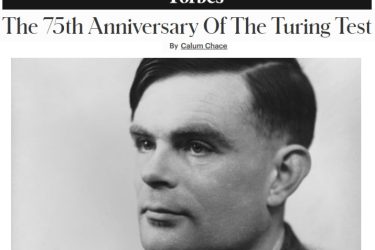Technological unemployment and economists
The term “technological unemployment” was popularised in the 1930s by the celebrated economist John Maynard Keynes. Fifty years later, another renowned economist called Wassily Leontief warned that jobs for humans might follow the same path that jobs for horses did in the early 20th century. So the idea has a respectable economic heritage, but economists are still arguing about whether it will actually happen.
The latest contribution comes from Daniel Susskind, a member of an unreasonably talented family of lawyers, economists and academics. His economic credentials are strong: previously an adviser at Number 10, he is now a fellow at Balliol College, Oxford. Susskind is on the side of those who think that technological unemployment is very likely to happen in a matter of decades. He does not attempt a watertight proof, but he helps to clarify how economists should think about the issue.
Unlike many commentators, Susskind goes beyond diagnosis and into prognosis and prescription. This is commendable, and although I disagree with where he ends up, the journey is important because it is vital that more thinking is done on this subject. The book is well-written, and easy to digest.
Susskind is not a technological determinist: he speculates that if horses had the vote, their fate might have been different. He describes himself instead as a technological realist, and thinks that our freedom of movement is constrained. We can’t escape the fact that we will build more and more capable machines. Our challenge is not to try to stop this, but to work out how to flourish anyway.
The substitution force and the complementary force

The book provides a clear and helpful discussion of the two main economic forces that determine whether there is technological unemployment: the substitution force and the complementary force.
The substitution force is straightforward: machines replace horses and humans in jobs if they are cheaper, better, and / or faster. In 1915 there were 21 million horses labouring away in America, and the US horse population today is two million.
Despite numerous rounds of automation (mostly mechanisation so far) humans have not been ejected from the workplace, and many developed economies are close to full employment. This is because of the complementary force, which has three effects: the productivity effect, the bigger pie effect, and the changing pie effect.
The productivity effect is when automation eliminates some jobs, but makes other workers more productive. Computer-aided design (CAD) has reduced employment for draughtsmen, but it has also enabled architects to work much faster, and design more complex, efficient and elegant buildings.
The bigger pie effect is clearly visible in the economic history of the USA: its GDP was 15,000 times higher in 2000 than it was in 1700. This means more wealth, more demand, and more jobs.
The changing pie effect is seen in the shift in economies and employment from farms to factories, and then to offices.
ALM and ATM

In 2003, the MIT economists David Autor, Frank Levy, Richard Murnane gave their names to the ALM hypothesis, which provides more detail about how the substitution effect works. It points out that jobs are not monolithic, but comprised of tasks. Automation replaces tasks which are routine. It is not always obvious which tasks are routine, and they are certainly not restricted to low-paid, blue-collar jobs. The Luddites who smashed looms in the early 19th century were not unskilled labourers, but artisans. Their jobs were being de-skilled by machines.
Today, lots of office jobs involve routine tasks, and Bank of England Governor Mark Carney has warned of an impending “massacre of the Dilberts”. Many economists think that since the 1980s, automation has hollowed out middle-range jobs, leaving untouched the high-skilled cognitive jobs, and also the manual jobs, which, as Moravec’s Law explains, are hard to automate because while reasoning (which is hard for humans) requires very little computation, sensorimotor skills (which are easy for human adults) require enormous computational resources.
David Autor has argued for years that the complementary effect means that technological unemployment is not something to worry about for the foreseeable future. In 2016 he gave an engaging TED talk in which he argued that when ATMs automated the jobs of bank tellers, the number of human tellers actually rose, because the ATMs enabled banks to open more branches, and the tellers carried out more value-added tasks.
It is a pity that Susskind repeats this story, because it is almost certainly untrue. The real reason the number of branches increased was a piece of financial deregulation, the Riegle-Neal Act of 1994, which allowed more banks to operate across state borders. This explains why the number of branches only increased in the USA, and not, for example, in Europe.
The Big Bang in AI, in 2012

In 2012 there was a Big Bang in artificial intelligence. Access to more data and more powerful machines enabled AI researchers to deploy machine learning, a well-established type of statistical technique. Since then, it has been much harder to sustain the argument that the complementary effect will persist for the foreseeable future. Machine learning, and in particular a sub-set called deep learning, enables machines to carry out tasks which are non-routine, and indeed sometimes require creativity. Those who continue to deny that machines can be creative have simply not been paying attention. There is clear evidence of creativity in the famous move 37 in game two of AlphaGo’s defeat of Lee Sedol, the best human Go player. Umpires in chess championships between humans now watch out for unusual creativity, which is a sign that the player has cheated by using a computer.
Oddly, Susskind chooses not to use the terminology of machine learning, but calls it “pragmatic” AI instead. The form of AI which prevailed before is generally called symbolic AI, or good old-fashioned AI (GOFAI), but Susskind calls it “purist”.
This transition within AI has caught out many eminent thinkers. They seem to confuse consciousness (which machines do not appear to possess) and intelligence (which they certainly do display). The philosopher John Searle complained that by developing Deep Blue, IBM was giving up on AI. Douglas Hofstadter thought that IBM’s Watson, which won Jeopardy, was vacuous. Intelligence is most concisely defined as goal-oriented learning behaviour, and it is not a specifically human thing. We humans are just the most advanced exemplar we have today. We are unlikely to be the most advanced exemplar this planet will ever host.
For these thinkers, intelligence is whatever machines can’t do today. They assume that machines will have to reach artificial general intelligence (AGI, or strong AI) to be capable of the more complex things that we do, like driving, diagnosing cancers, holding conversations, etc. Whenever any of these things falls to the machines, they move on to the next. Susskind is surely correct to say that technological unemployment does not require AGI.
The capabilities we use to earn a living can be classified as manual, cognitive, and affective. (Affective capabilities relate to human moods, feelings and attitudes.) Machines have been taking over the jobs requiring manual capabilities for decades. They dominate heavy-lifting tasks, and they are increasingly good at fiddly manual jobs too. We can already see cognitive capabilities starting to go the same way, and we cannot we be confident that jobs requiring affective capabilities will always be reserved for humans: machines can already tell if you are happy, surprised, or depressed. Or gay. Some AI systems can tell these things by your facial expressions, and others by how you walk, or dance, or type.
Automation will proceed at different paces in different places, not least because the cost of the alternative to automation will vary. Countries that age faster will automate faster, and regulations and cultures will also play a role in setting the timeline. But overall, the process is ineluctable. Take any piece of technology – a computer, a mobile phone, a robot: the current version is the least advanced that it is ever going to be. As Susskind says, “nothing is certain in life except death, taxes, and the relentless process of task encroachment.”
Frictional and structural technological unemployment

Susskind expects task encroachment to cause two kinds of unemployment: frictional, and then structural.
Frictional technological unemployment means there are still jobs, but not all of us are equipped to do them. Susskind suggests this may already be happening: in the USA, unemployment is very low, at 3.7%, but it is no secret that unemployment numbers don’t tell the whole story. The participation rate is the number of people who are employed, or looking for employment. This is depressed, with one in six men of working age having dropped out of the workforce – double the level in 1940. There is a mis-match of skills, identity, and place: men are unwilling to take the so-called “pink collar” jobs which have expanded, like nursing, teaching, housekeeping, and hairdressing. Or they may not be offered them.
If more and more workers chase a dwindling number of jobs, the result will be lower wages, and the growth of “the precariat”. And if automation replaces human jobs at an accelerating rate, we will see what I call the Churn, as people have to re-skill and re-train more and more often, changing their jobs, their companies, and even their careers.
Structural technological unemployment, by contrast, means the complementary force has become ineffective. A human is replaced in one job, and even though the productivity effect, the bigger pie effect or the changing pie effect means that another job is created, that new job is done by a machine, not by the displaced human. Susskind is no more able to prove beyond reasonable doubt that this will happen than any other commentator has been, but he provides plenty of compelling examples which show why we should take the idea seriously.
Skeptics about the idea of technological unemployment think it is the “lump of labour fallacy”, the misconception that there is a fixed amount of work—a lump of labour—to be done within an economy which can be distributed to create more or fewer jobs. David Schloss, a British economist, pointed out back in 1892 that instead of being static, work expands. The trouble is, there is no guarantee that the additional work will always be done by humans instead of machines.
If technological unemployment is coming, when will it arrive? Susskind is refreshingly honest: he does not know. There may be sudden surges and abrupt tipping points, or there may be a constant, gradual erosion of the complementary force. Unusually, for a book on this subject, Susskind does not explicitly refer to the exponential growth in the power of our machines. But he does say that he thinks the timing is decades rather than centuries, because given eight decades of current progress, a machine will be a trillion times more powerful than its equivalent today.
The Big State

In the book’s concluding chapters, Susskind asks how we will all find meaning in our lives without jobs, and how we will all earn enough to live on. Many of the authors who have addressed technological unemployment before have ground to a halt at this point, particularly American ones. Susskind’s proposal gives a clue as to why they struggle so much. For both questions, he concludes that the answer lies partly in developing a Big State, which will redistribute income and wealth, and nudge us all into behaviours that will give us lives of fulfilment rather than boredom and despair. What he has in mind is something much more radical and much more intrusive than the currently popular appeals for more industrial strategy and a more generous welfare state. This will be anathema to many American readers, and it certainly raises the spectre of an authoritarian state, or at least a heavily patronising one.
Although Susskind thinks we will need the Big State to help us find meaning and purpose in a world without work, he provides a series of historical examples which demonstrate that you don’t need a job to enjoy a life with meaning. One of them is aristocrats. He quotes Bertrand Russell as saying that far from being bored and useless, the leisure class “contributed nearly the whole of what we call civilisation”.
Furthermore, working nine to five (or five to nine, for the merchants bankers and startup founders amongst you) is not a state of nature. Foragers and hunter-gatherers worked fewer hours each day than we do. The ancient Greeks’ approach to work and leisure was the opposite of ours: the ancient Greek word for work is ascholia, and it means the absence of leisure. Aristotle declared that “citizens must not lead the life of artisans or tradesmen, for such a life is ignoble and inimical to excellence.”
This idea is also enshrined in the foundation story of our most widespread religion. When Adam and Eve ate the forbidden apple, God sentenced them to work, and they lost the lives of leisure they had led up till then. If Marx were alive today, he might say that work is the new opiate of the masses – the pastime we use to blind ourselves to the possibility of a better life.
Missing abundance

Susskind also thinks the Big State will be needed to re-distribute income and wealth. He envisages taxes rising sharply, and various kinds of intrusive behaviour change programmes, including obliging accountants to work against the financial interests of their clients.
Like many economists, he is skeptical of universal basic income. He understands the argument that making such payments universal would ensure they reach everybody, and should neutralise their stigma, but he cannot reconcile himself to the waste involved in paying UBI to, for instance, Rupert Murdoch and Mark Zuckerberg.
But I think he neglects the biggest problem with UBI, which is the little word in the middle: “basic”. At best, even if it is somehow affordable, UBI succeeds only in keeping everybody alive but poor. We have to do much better than this. We have to make everybody rich – or at least comfortable.
I suspect there is only one way we can transfer enough income and / or wealth from the rich to the rest of us to make everybody comfortable in a world without jobs. That is to develop the economy of abundance. If prices remain essentially as high as they are today, UBI is doomed to failure, and so are its variants, like Universal Basic Services, or Conditional Basic Income. The transfer would weight heavily on the employed and the rich, and would be resisted. But if we can drive down to almost zero the price of everything we need for a great standard of living, then the transfer should be achievable, and a world without jobs could be a truly wonderful place. I think we can develop an economy of abundance – in fact it may arise naturally. However, the transition will be bumpy, and we need to have our eyes open.
This article first appeared in Forbes



